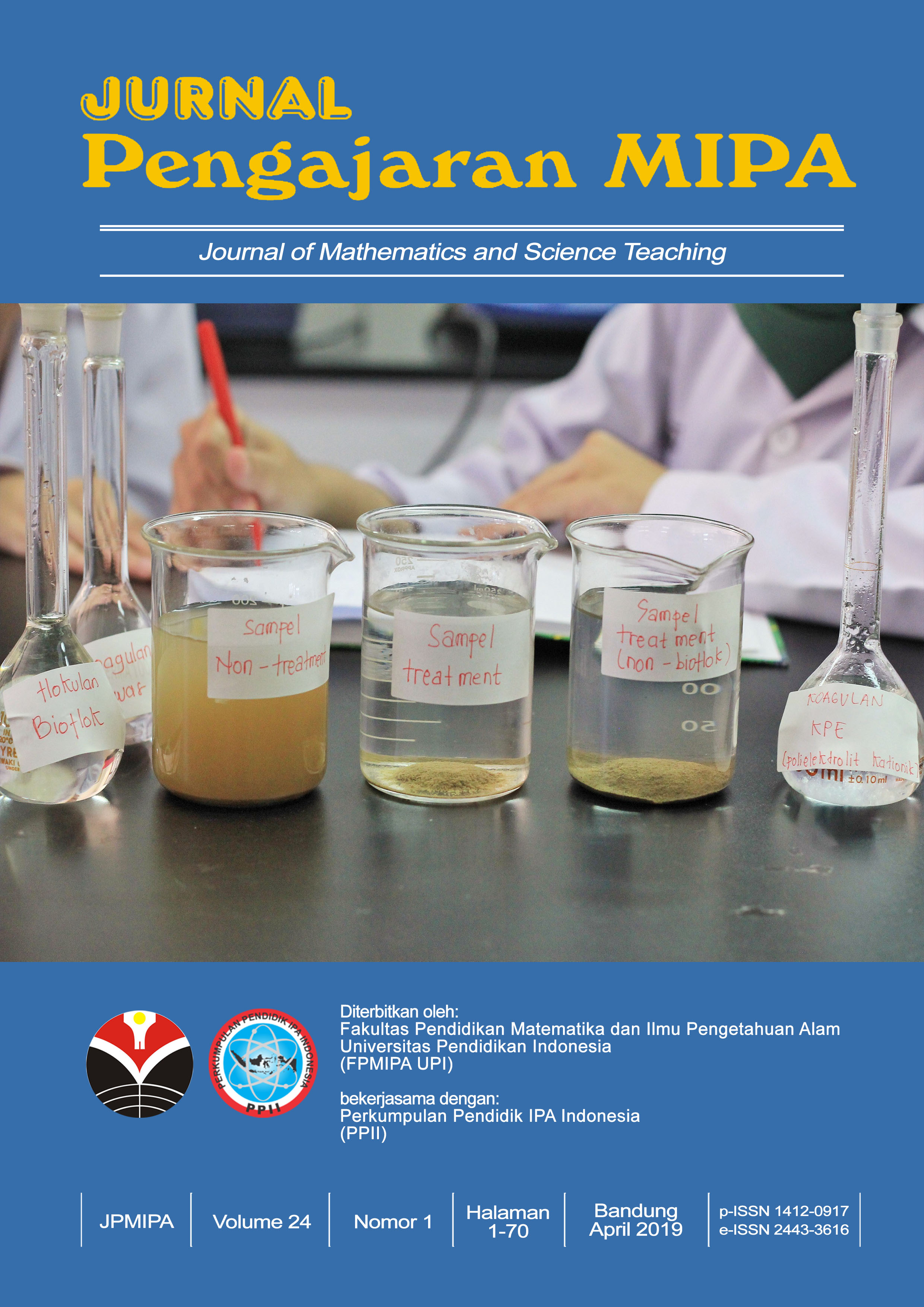KAJIAN ADSORPSI Ag(S2O3)2 3- DALAM LIMBAH FOTOGRAFI PADA ADSORBEN KITIN DAN ASAM HUMAT TERIMOBILISASI PADA KITIN
Abstract
This work was started with isolation of humic acid from peat soil and chitin from crab shell, immobilization of humic acid on chitin, and characterization of adsorbents of C and HAC. Optimum condition was studied by interacting the adsorbents with Ag(S2O3)2 3- in a synthetic solution on various of pH from 2 to 10. Adsorption rate was studied by interacting the adsorbent with Ag(S2O3)2 3- in the synthetic solution on various time from 2 to 120 minutes. The determination of the energy and the capacity of adsorption were studied by interacting the adsorbent with Ag(S2O3)2 3- on various initial concentration from 2 to 75 ppm. Moreover, the mechanism of adsorption was studied by applying a sequential desorption using H2O, Na2EDTA 0.1 M, KSCN 0.5 M, and KOH 1 M. The adsorption of Ag(S2O3)2 3- in photography wastewater on C and on HAC were studied at the same condition as obtained for the synthetic solution.
The result showed that pH 2 was the optimum adsorption condition for Ag(S2O3)2 3- in the synthetic solution on both C and HAC adsorbents. Ag(S2O3)2 3- in the synthetic solution was chemically adsorbed on C and on HAC, involving energy adsorption of 22.74–23.30 kJ/mole, respectively. Adsorption of Ag(S2O3)2 3- on C was faster than that on HAC with the rate constants for adsorbent C and HAC were 73 x 10-4 and 46 x 10-4 minute-1 , respectively. Adsorption capacity of Ag(S2O3)2 3- on C and on HAC were 2.107 x 10-4 and 1.818 x 10-4 mole/g, respectively. The amount of Ag(S2O3)2 3- in photography wastewater that was adsorbed on C and on HAC were 13.52 and 12.47 mg/L, respectively. The hydrogen bonding and ion exchange were the dominant mechanism of adsorption.
Keywords
Full Text:
PDFReferences
Arthur, D. Little Inc, 1989, Waste-Audit Study-Photo Processing Industry Prepared for Alternative Tecnology Section, Toxic Substances Control Division, California Departement of Health Services.
Irwin, R.J., Van Mouwerik, M., Stevens, L., Seese, M.D., Basham, W., 1997, Environmental Contaminants Encyclopedia Silver Entry, National Park Service water Resource Divisions, Water Operation Branch, Fort Collins, Colorado.
Muzzarelli, R.A.A., 1977, Chitin, Pergamon Press.
Oscik, J., 1982, Adsorption, John Wiley, Chichester
Pearson, R.G., 1963, Hard and Soft Acids Bases, American Chemical Society, Vol. 85, No. 22, 3533-3539.
Santosa, S.J., Narsito, and Lesbani, A., 2003, The Determination of Active Site, Capacity, Energy, and Rate Constant on the Adsorption of Zn(II) and Cd(II)on Chitin, Journal of Ion Exchange (Sopplement), vol.14, 89-92.
Songkroah, C., Nakbanpote, W., Thiravetyan, P., 2003, Recovery of Silver-thiosulfat Complexes with Chitin, Process Biochemistry, www.elsevier.com.
Stevenson, F.J., 1994, Humus Chemistry, John wiley and Sons, New York.
Stum, W. and Morgan, J.J., 1981, Aquatic Chemistry, John Wileys and Sons Inc., New York.
Vogel, A.I., 1986, Buku Teks Analisa Anorganik Kualitatif Makro dan Semimikro, Edisi 5, Penerjemah L.Setiono dan A.H. Pudjaatmaka, Kalman Media Pustaka, Jakarta.
Wood, W.A., 1988, Chitin, Chitosan and Related Enzymes, Academic Press, New York.
DOI: https://doi.org/10.18269/jpmipa.v9i2.35754
Refbacks
- There are currently no refbacks.
Copyright (c) 2021 Jurnal Pengajaran MIPA

This work is licensed under a Creative Commons Attribution-ShareAlike 4.0 International License.
JPMIPA http://ejournal.upi.edu/index.php/jpmipa/index is licensed under a Creative Commons Attribution-ShareAlike 4.0 International License
Jurnal Pengajaran Matematika dan Ilmu Pengetahuan Alam (JPMIPA) or Journal of Mathematics and Science Teaching
All rights reserverd. pISSN 1412-0917 eISSN 2443-3616
Copyright © Faculty of Mathematics and Science Education (FPMIPA) Universitas Pendidikan Indonesia (UPI)
View JPMIPA Stats









